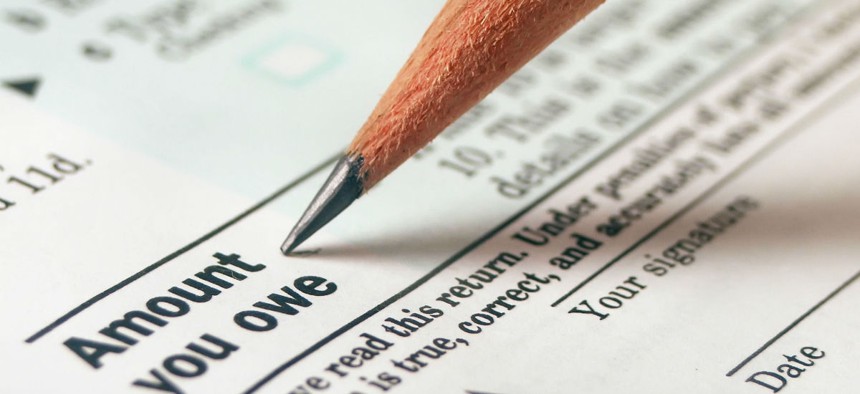
By Margaret M Stewart / Shutterstock.com
Disputed IRS Debt Collection Program Shows Gains in New Report
Latest figures find the program brought in $51 million in fiscal 2018 after costs.
In stark contrast to predictions and earlier reports, the controversial private debt collection program that Congress assigned to the Internal Revenue Service showed substantive revenue reclaimed for the government in fiscal 2018, new figures indicate.
After start-up costs and commissions to four commercial companies, the effort to collect unpaid taxes brought in $51 million in revenue for the year, according to the agency’s quarterly report released on Tuesday by Sen. Chuck Grassley, R-Iowa.
An earlier report from the National Taxpayer Advocate’s office found the program, which launched April 10, 2017, had cost more than the private debt collection firms had brought in. As of May 2018, the Treasury Inspector General for Tax Administration's data showed a small net profit of $1.3 million.
“I’m glad this program is helping make the system fairer for those who fulfill their civic responsibility and follow the law,” Grassley said. “The IRS private debt collection program continues to prove its value. The most recent data again shows that revenue returned to the U.S. Treasury exceeds all associated program costs. That’s something we don’t often see here in Washington.”
After factoring in start-up costs, Grassley put the total revenue from the program since its inception at $22 million, with $14.5 specifically earmarked for the IRS. That money “can now be used to hire and train additional compliance personnel, which would help increase efficiency and responsiveness to American taxpayers” though the agency’s Special Compliance Personnel Program Fund, he said.
Past versions of the collection program in the 1990s and in 2004-2009 did not perform well in studies.
The new report was hailed by the nonprofit Partnership for Tax Compliance, a coalition of private firms in the collection industry, as showing the program “works to bolster the U.S. Treasury and strengthen the effectiveness of the IRS by providing taxpayers with customized, purely voluntary options to help them satisfy their tax debt.”
Its summary put its direct collection for the fiscal year at $88.7 million from more than 600,000 taxpaying entities, along with millions more the IRS collected using its full-time staff. The firms also produced nearly 25,000 installment agreements now under way with late taxpayers, the group said.
“The data makes it crystal clear that the PDC program is performing extremely well, successfully generating tax revenue for the federal government and paying for itself,” said Kristin Walter, spokeswoman for the partnership. “Taxpayers are choosing to participate in this helpful path to tax compliance and reporting a 93 percent customer satisfaction rate when surveyed about their experience.”
The report estimated that $131 billion of uncollected taxes remain to be targeted and that revenue collections will “grow exponentially.”
Tony Reardon, national president of the National Treasury Employees Union, which has been highly critical of the program, said in an email to Government Executive that the program should be canceled. “It took a year-and-a-half and millions of taxpayer dollars, but the congressionally mandated program allowing private, for-profit companies to collect overdue federal tax debt has finally brought in more money than it cost,” he said. “A government program with such a low return on investment, especially when it loses some of the proceeds in commissions paid to private contractors, is hardly something to celebrate. If the IRS had instead invested the $66.4 million into the existing IRS collection program, the returns would have been vastly greater.”
The taxpayer advocate did not respond to requests for comment to Government Executive by publication time.







